
Контактные системы зажигания, устройство, принцип работы
Содержание
Любой автомобиль, оснащенный двигателем внутреннего сгорания, в электронике обязательно будет иметь систему зажигания. Чтобы смесь распыленного топлива и воздуха, находящаяся в цилиндрах, смогла воспламениться, нужен приличный разряд. В зависимости от модификации бортовой сети авто этот показатель достигает 30 тысяч вольт.
Откуда берется такая энергия, если АКБ в машине выдает только 12 вольт? Основной элемент, который генерирует такое напряжение, это катушка зажигания. Подробно о том, как она работает и какие бывают модификации, рассказано в отдельном обзоре.
Сейчас же сосредоточимся на принципе работы одной из разновидностей систем зажигания – контактной (о разных типах СЗ рассказывается здесь).
Что такое контактная система зажигания автомобиля
Современные автомобили получили батарейный тип электрической системы. Ее схема следующая. Плюсовой полюс аккумулятора проводами подсоединяется на все электрооборудование автомобиля. Минус подсоединяется к кузову. С каждого электрического прибора минусовый провод также подсоединяется к металлической части, соединенной с кузовом. Благодаря этому в машине меньше проводов, а электроцепь замыкается через кузов.
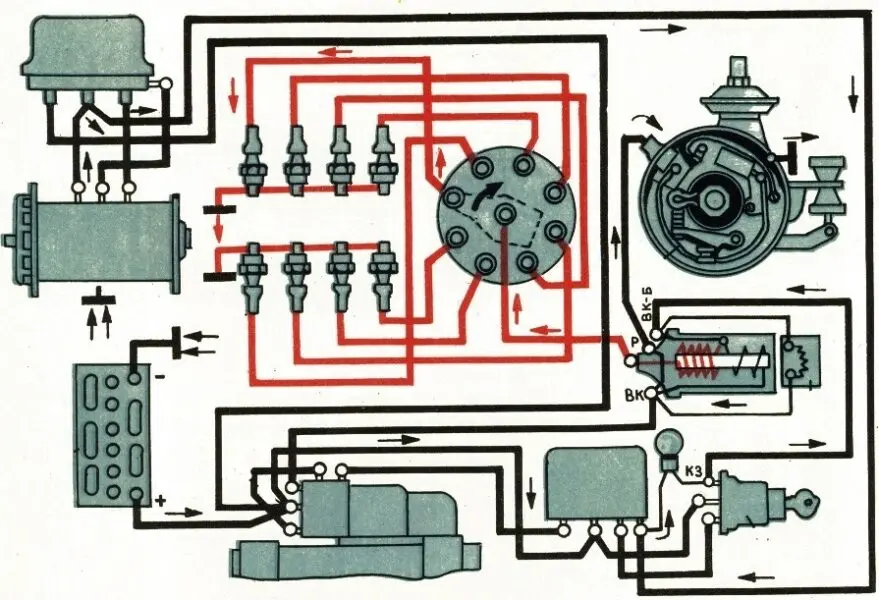
Система зажигания автомобиля может быть контактной, бесконтактной или электронной. Изначально на машинах использовался контактный тип систем. Все современные модели получают электронную систему, которая имеет принципиальное отличие от предыдущих видов. Зажигание в них контролируется микропроцессором. Как переходная модификация между этими разновидностями существует бесконтактная система.
Так же, как и в остальных вариантах, цель данной СЗ заключается в том, чтобы сгенерировать электрический импульс нужной силы и направить его на конкретную свечу зажигания. Контактный тип системы в своей схеме имеет прерыватель-распределитель или трамблер. Этот элемент осуществляет управление накапливанием электрической энергии в катушке зажигания и распределяет импульс по цилиндрам. В его устройство входит кулачковый элемент, который вращаясь на валу, поочередно замыкает электрические цепи конкретной свечи. Подробней о его устройстве и работе рассказывается в другой статье.
В отличие от контактной системы бесконтактный аналог имеет транзисторный тип управления накапливания и распределения импульса.
Схема контактной системы зажигания
Схема контактной СЗ состоит из:
- Замка зажигания. Это контактная группа, с помощью которой активируется бортовая система автомобиля и осуществляется запуск двигателя при помощи стартера. Этот элемент разрывает общую электросхему любого авто.
- Аккумуляторного источника питания. Пока двигатель не заведен, электрический ток поступает от АКБ. Автомобильный аккумулятор также выполняет функцию резерва, если генератор не выдает достаточной энергии для работы электрооборудования. Подробно о том, как устроен аккумулятор, читайте здесь.
- Распределителя (трамблер). Как следует из названия этого устройства, его назначение заключается в том, чтобы обеспечить распределение тока с высоким напряжением от катушки зажигания на все свечи по очереди. Чтобы соблюдалась очередность срабатывания цилиндров, от распределителя идут высоковольтные провода разной длины (при подсоединении легче правильно подключить цилиндры к трамблеру).
- Конденсатора. Конденсатор крепится к корпусу распределительного механизма. Его действие устраняет искрообразование между смыкающимися/размыкающимися кулачками трамблера. Искра между этими элементами приводит к тому, что кулачки начинают подгорать, из-за чего может пропадать контакт между некоторыми из них. Это приводит к тому, что конкретная свеча не будет срабатывать, и воздушно-топливная смесь будет просто выбрасываться несгоревшей в выхлопную трубу. В зависимости от модификации системы зажигания емкость конденсатора может быть разной.
- Свечи зажигания. Подробно об устройстве и о том, какой у них принцип работы, рассказывается отдельно. Если коротко, то от трамблера электрический импульс поступает на центральный электрод. Так как между ним и боковым элементом небольшое расстояние, происходит пробой с образованием мощной искры, которая воспламеняет смесь воздуха и топлива в цилиндре.
- Привода. Трамблер не оснащен индивидуальным приводом. Он посажен на вал, который синхронизирован с работой распредвала. Ротор механизма вращается в два раза медленней коленчатого вала, так же, как и распределительный вал ГРМ.
- Катушки зажигания. Работа этого элемента заключается в том, чтобы преобразовывать ток низкого напряжения в высоковольтный импульс. Независимо от модификации, КЗ будет состоять из двух обмоток. Через первичную проходит электричество от аккумулятора (когда машина не заведена) или от генератора (когда работает ДВС). Благодаря резкому изменению магнитного поля и электрического процесса вторичный элемент начинает накапливать ток высокого напряжения.
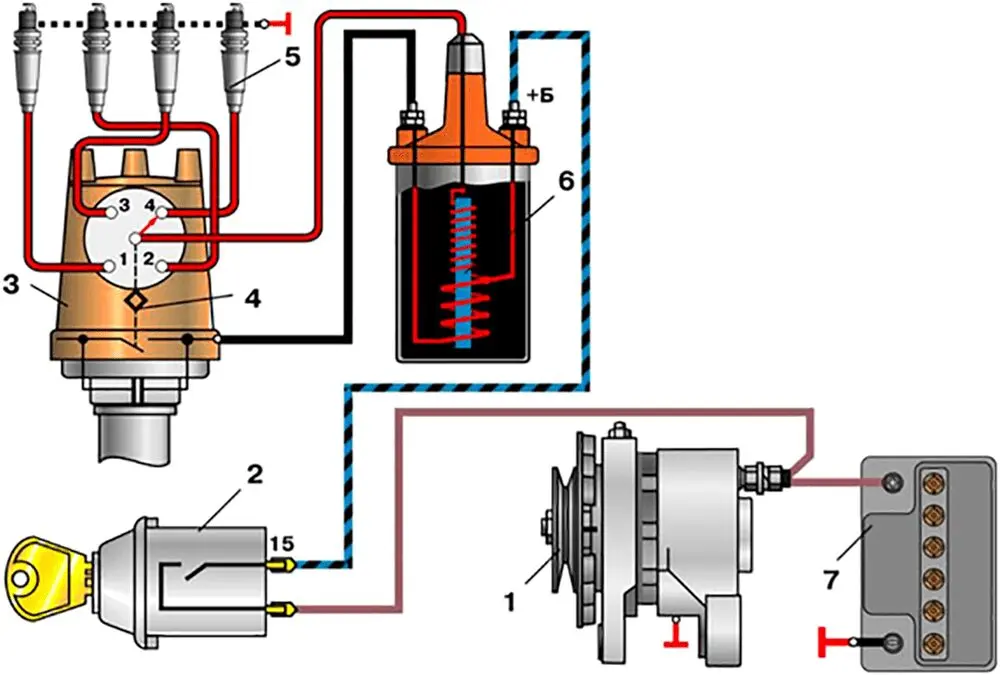
Среди контактных систем существует несколько модификаций. Вот их основные отличия:
- Самая распространенная схема – КСЗ. Она имеет классический тип конструкции: одна катушка, прерыватель и распределитель.
- Ее модификация, в устройство которой входит контактный датчик и элемент предварительного накопления энергии.
- Третий тип контактной системы – КТСЗ. В ее устройстве помимо контактов будет присутствовать транзистор и накопитель индукционного типа. По сравнению с классическим вариантом контактно-транзисторная система имеет несколько достоинств. Первый плюс в том, что через контакты не проходит высокое напряжение. Распределитель будет работать только с управляющими импульсами, благодаря чему отсутствует искра между кулачками. Такое устройство позволяет не использовать конденсатор в распределителе. В контактно-транзисторной модификации можно улучшить искрообразование на свечах (больше напряжение на вторичной обмотке, за счет чего свечной зазор можно увеличить, чтобы искра была длиннее).
Чтобы разобраться в том, какая СЗ используется в конкретном автомобиле, необходимо посмотреть на чертеж электрической системы. Вот как выглядят схемы таких систем:
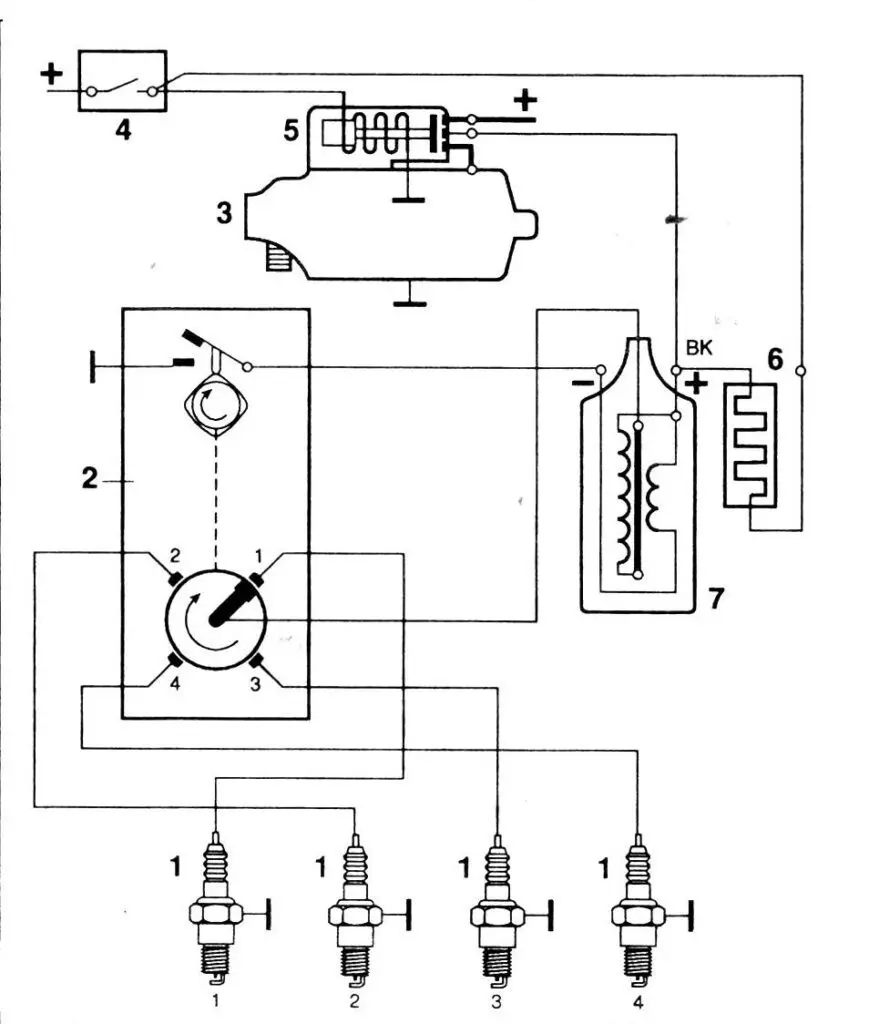
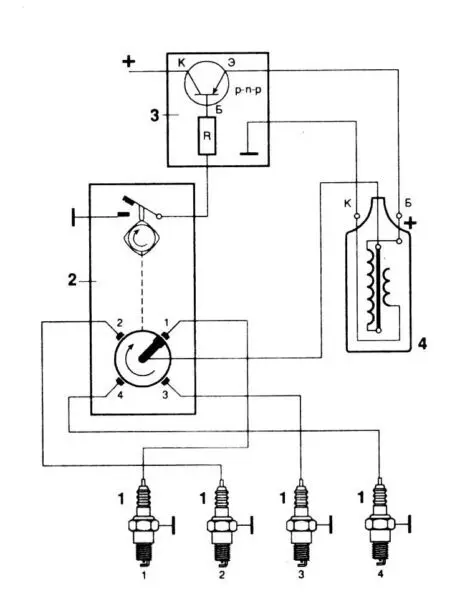
Принцип работы контактной системы зажигания
Подобно бесконтактной и электронной системы контактный аналог работает по принципу преобразования и накапливания энергии, которая поступает от аккумулятора на первичную обмотку катушки зажигания. Этот элемент имеет трансформаторную конструкцию, которая обеспечивает преобразование 12В в напряжение до 30 тысяч вольт.
Эта энергия распределяется трамблером на каждую свечу, благодаря чему в цилиндрах поочередно, в соответствии с фазами газораспределения и тактами двигателя, образуется искра, достаточная для воспламенения ВТС.
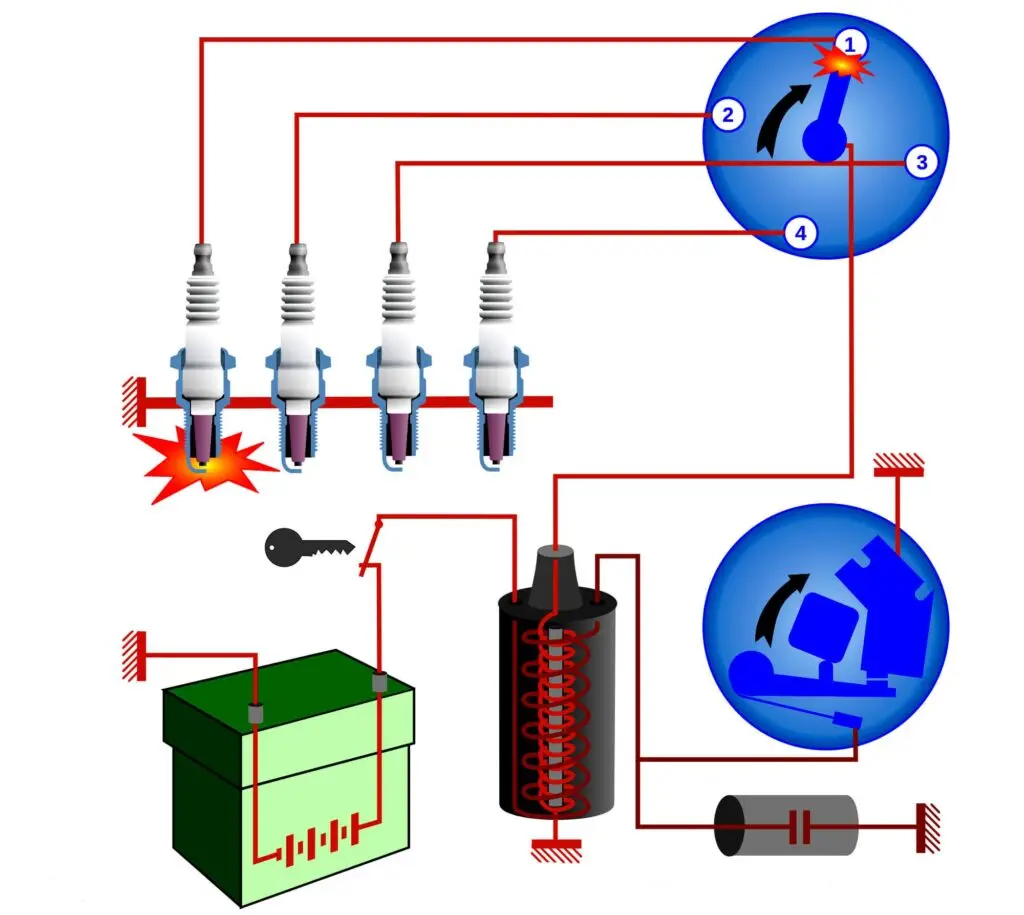
Всю работы контактной системы зажигания можно условно разделить на следующие этапы:
- Активация бортовой сети. Водитель поворачивает ключ, контактная группа замыкается. Электричество от батареи идет на первичную обмотку КЗ.
- Генерация тока высокого напряжения. Этот процесс происходит за счет образования магнитного поля между витками первичного и вторичного контура.
- Запуск мотора. Поворот ключа в замке до упора провоцирует подключение стартера к электросети авто (все, что нужно знать о работе этого механизма, рассказано здесь). Проворачивание коленчатого вала активирует работу газораспределительного механизма (для этого используется ременная или цепная передача, о которой рассказывается в другой статье). Так как трамблер зачастую начинает работать вместе с распредвалом, то его контакты поочередно замыкаются.
- Генерация тока высокого напряжения. Когда срабатывает прерыватель (на первичной обмотке резко пропадает электричество), магнитное поле резко исчезает. В этот момент во вторичной обмотке за счет эффекта индукции появляется ток с напряжением, необходимым для образования искры в свече. Этот параметр зависит от модификации системы.
- Распределение импульсов. Как только размыкается первичная обмотка, высоковольтная линия (центральный провод, идущий от катушки до трамблера) оказывается под напряжением. В процессе вращения вала трамблера вращается и его бегунок. Он замыкает контур, предназначенный для конкретной свечи. По высоковольтному проводу импульс сразу поступает в соответствующий надсвечник.
- Образование искры. Когда ток высокого напряжения поступает на центральный сердечник свечи, небольшое расстояние между ним и боковым электродом провоцирует пробой с электрической дугой. Воздушно-топливная смесь загорается.
- Накапливание энергии. В доли секунды контакты распределителя размыкаются. В этот момент замыкается контур первичной обмотки. Между ней и вторичным контуром снова образуется магнитное поле. Дальше КСЗ работает по принципу, описанному выше.
Неисправности контактной системы зажигания
Итак, эффективность работы двигателя зависит не только от того, в какой пропорции будет смешиваться топливо с воздухом и от времени открытия клапанов, но также от момента, когда на свечи будет подаваться импульс. Большинству автомобилистов известен такой термин, как угол опережения зажигания.
Если не вдаваться в подробности, то это момент, когда в прочесе выполнения такта сжатия подается искра. Например, на высоких оборотах двигателя из-за инерции поршень уже может начать выполнять такт рабочего хода, а ВТС еще не успела зажечься. Из-за такого эффекта разгон автомобиля будет вялым, и в моторе может образовываться детонация или при открытии выпускного клапана догорающая смесь будет выбрасываться в выпускной коллектор.
Это обязательно приведет к разного рода поломкам. Чтобы избежать этого, контактная система зажигания оснащена вакуумным регулятором, который реагирует на нажатие педали акселератора и изменяет УОЗ.

Если СЗ будет работать нестабильно, мотор либо потеряет мощность, либо вообще не сможет работать. Вот основные неисправности, которые могут быть в контактных модификациях систем.
Нет искры на свечах
Искра пропадает в таких случаях:
- Образовался обрыв низковольтного провода (идет от АКБ на катушку) или пропал контакт из-за окисления;
- Пропажа контакта между бегунком и контактами распределителя. Чаще всего это происходит из-за образования на них нагара;
- Поломка КЗ (обрыв витков обмотки), выход из строя конденсатора, появление трещин на крышке трамблера;
- Нарушена изоляция высоковольтных проводов;
- Поломка самой свечи.
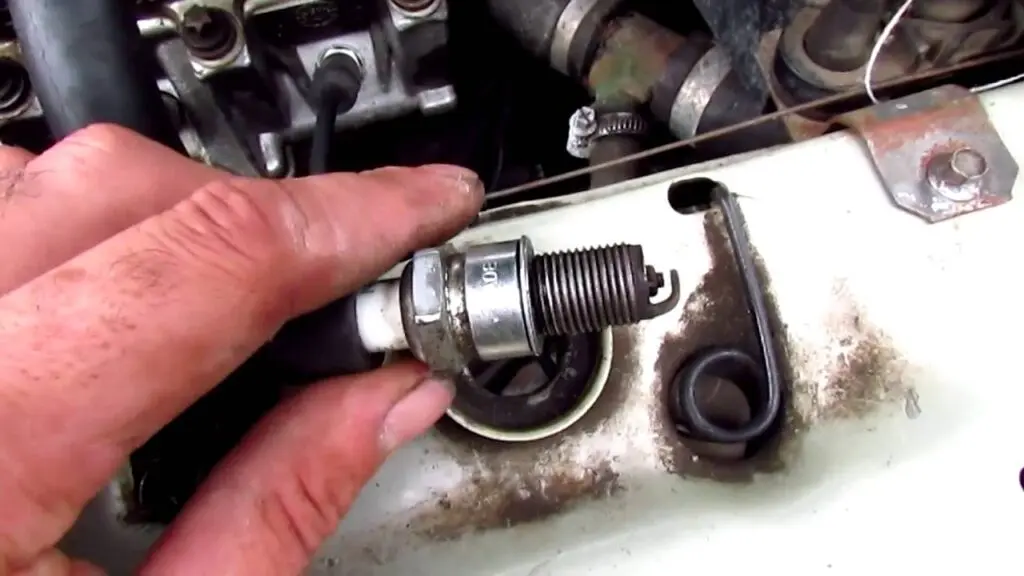
Чтобы устранить неисправности, необходимо проверить целостность контура высокого и низкого напряжения (есть ли контакт проводов с клеммами, если пропал, то почистить соединение), а также провести визуальный осмотр механизмов. В процессе диагностики регулируются зазоры между контактами прерывателя. Неисправные элементы меняются на новые.
Так как управление импульсами системы осуществляется при помощи механических устройств, то неисправности в виде нагара или обрыва цепи – вполне естественные, так как спровоцированы естественным износом некоторых деталей.
Двигатель работает с перебоями
Если в первом случае отсутствие искры на свечах не даст возможности мотору запуститься, то нестабильная работа ДВС может быть спровоцирована неисправностями в отдельном электрическом контуре (например, пробой одного из ВВ проводов).
Вот какие неполадки в СЗ могут вызывать нестабильную работу агрегата:
- Поломка свечи;
- Слишком большой или маленький зазор между электродами свечи;
- Неправильный зазор между контактами прерывателя;
- Лопнула крышка трамблера или ротор;
- Ошибки в выставлении УОЗ.
В зависимости от типа поломки они устраняются выставлением корректного УОЗ, зазоров и заменой сломанных деталей на новые.
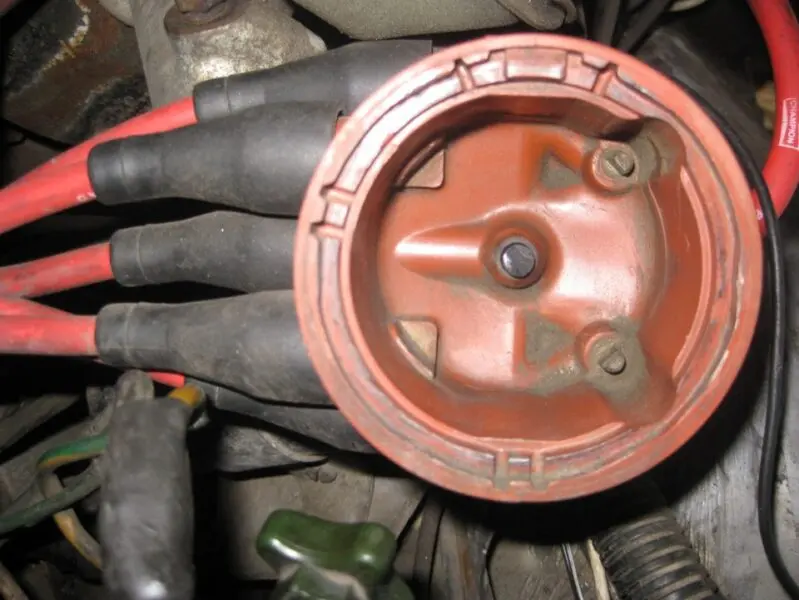
Диагностика любых неисправностей этого типа систем зажигания заключается в визуальном осмотре всех узлов электроцепи. При поломках катушки эту деталь просто заменяют на новую. Ее неисправности можно выявить проверкой на разрыв витков при помощи мультиметра в режиме прозвонки.
Дополнительно предлагаем посмотреть небольшой видеообзор о том, по какому принципу работает система зажигания с механическим распределителем:
Вопросы и ответы:
Чем лучше бесконтактная система зажигания? Так как в ней нет подвижных распределителя и прерывателя, то контакты в БК системе не требуют частого обслуживания (регулировка или очистка от нагара). В такой системе более стабильный запуск ДВС.
Какие существуют системы зажигания? Всего существует два типа систем зажигания: контактная и бесконтактная. В первом случае имеется контактный прерыватель-распределитель. Во втором случае роль прерывателя (и распределителя) играет коммутатор.
Как работает электронная система зажигания? В таких системах импульс на образование искры и распределение тока высокого напряжения контролируется электроникой. В них нет механических элементов, влияющих на распределение или прерывание импульсов.